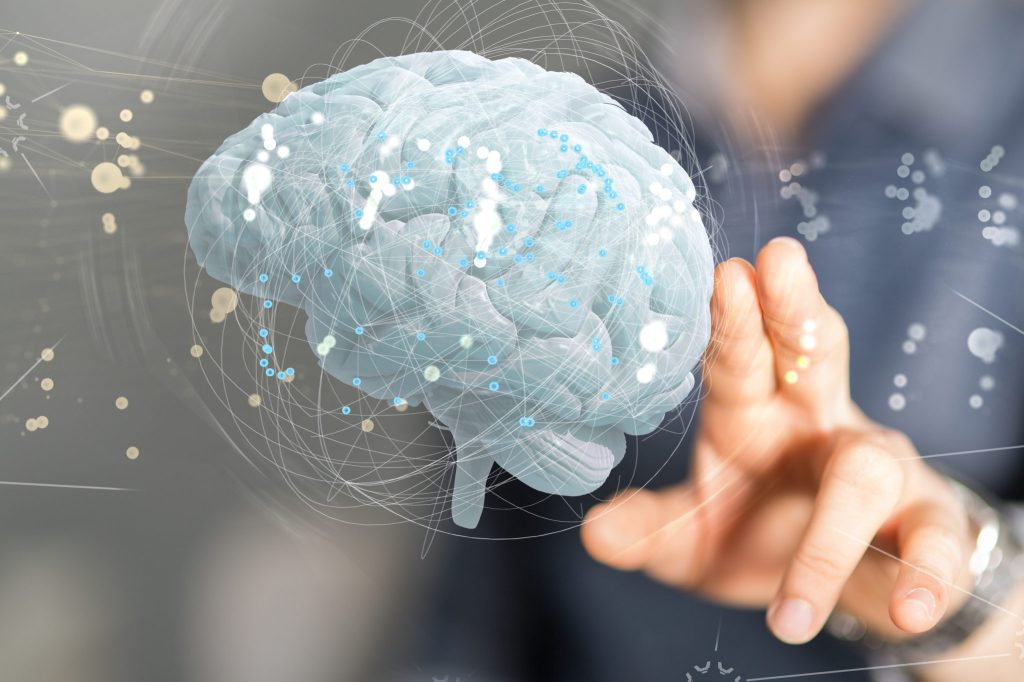AI in Investing – are we there yet?
3AI January 2, 2021

Believes Atanuu Agarrwal from Upside AI, this and much more in a conversation with Sumit Chanda from JARVIS by Monitree, Siddharth Panjwani from K2 Capital, and Atanuu.
With the world moving too fast and data piling up by every millisecond, why haven’t we fully utilized the capabilities of technology to carry out Smart Investing for the ideal portfolio? In all fairness, we have nothing against humans but we have to agree that machines are better at certain things than us.
We’ve used data to pick baseball players to create an iconic team. We’ve used data to make pit stops in F1 utilize only a fraction of seconds. Great players have faced off against computers in chess, lost but also learned heavily from it.
Artificial Intelligence has paved the way for better results or to be more precise quite ideal results that humans are just not capable of. So what’s stopping us from actually stopping us from using Artificial Intelligence (AI) in Investing? After all, we have all the data, we have the technology — so what are we waiting for?
Before we dive in, let’s be totally honest about how people see AI today. Everybody’s definitely heard of it, they definitely think it sounds cool and probably think it’s something out of a sci-fi movie that is ready to take over the whole world.
To get a better understanding we’ve brought in 3 experts within the investment domain that utilizes and executes AI within their smallcases.
Smallcase had a chat with Sumit Chanda from JARVIS by Monitree, Siddharth Panjwani from K2 Capital, and Atanuu Agarrwal from Upside AI.
We asked them simple questions to help understand this complex topic.
Q) Before we get into the technicalities of AI, we’d really like to know what it actually is. Everyone keeps talking about it and it seems like something out of a sci-fi movie. But, what actually is AI?
Atanuu Agarrwal: This is such a great question, and like it is with most things movies do a good job of distorting reality. AI as a concept is really not that new – it has been around for decades.
The reason it is front and center is that we are now able to generate and capture copious amounts of data. Allow me a cliché here, if AI is a car, data is its petrol.
In addition, cheap computing power has made AI accessible to all whereby today even small upstarts like us can also afford to run fairly sophisticated algorithms.
Artificial intelligence is sort of a catch-all term and covers a huge range of concepts. Machine learning, which is a subset of AI and what we use, is basically a technology that is able to “learn” from data and generate outputs without explicit instructions from humans.
We have created a framework, but the output is self-generated by the algorithm. We don’t burden it with our biases.
Rest assured, as far as I know, the world is nowhere close to the kind of AI we have seen in the Terminator movies or recently in shows like Westworld. We are all safe for now.
Q) Well, that was a relief! Now that we know AI is safe, how do you all view AI in investing?
Sumit Chanda: Portfolio management & advisory is mainly conducted post analysing the fundamentals of the companies or technicals and in some rare cases even quantitative information.
In any such scenario, the amount of information that can be humanly analysed is limited, highly time-consuming, and resource-heavy.
With the advent of Artificial Intelligence & Big Data analytics for portfolio management, millions of data points can be analysed within a few seconds, eventually improving the portfolio creation & management for the end investor.
Moreover, the traditional research methodology is highly susceptible to the human emotions of either the fund manager or the investor.
While using technology to perform the research, the decisions can be ensured to be logically driven without any emotional bias.
Siddharth Panjwani: While AI is the new buzzword in practically any industry, it is but natural that Financial Services and Investing, in particular, are ripe for this type of analysis given that AI feeds off of data and data is plentiful in the markets, available relatively cheaply.
While pattern analysis and other esoteric ways of looking at the markets were at the bleeding edge just a decade back, with the proliferation of software libraries (in Python and R), it is very easy for any individual to download a time series and try their chops at divining the future using the latest AI/ ML techniques.
And although Siddharth believes AI is the way to go, he also pointed out why humans are necessary for supervision and control.
Siddharth Panjwani: That said, ultimately the underlying of any AI/ ML system is the data used to probabilistically divine an outcome. So, in some sense, it is still garbage in / garbage out.
If the input data does have a repeatable pattern that is statistically significant, we can trust that the current AI techniques will pick up stuff that lesser human eyes would miss.
Now the flip side is that in the real world especially finance and economics – these patterns, these variables themselves shift. The question is whether these patterns will repeat i.e. whether the system’s (out)performance is eminently replicable.
Put a million monkeys to work to find an outperforming system, and one of them will – it will outperform till it does not. What worked in a specific market pre-2008 might not work in the times of Modern Monetary Theory since the rules of the game themselves have changed.
One can go around in a circle and argue that given a longer data series, a bigger sample, the AI can be fixed and improved, but it really does not inspire confidence.
Long story short, while AI is a great tool involving pure numbers and taking the emotional sentiment and behavioral aspects out of the equation, it still needs a human chaperone with experience (and perhaps bias) to make sure that the output of the AI system is utilized sensibly. Skynet is still some distance from going live in our context.
This is not to be considered as a criticism of AI but the importance of a human guiding hand that can set the right parameters for the AI to operate.
Q. Speaking of AI, how does it fit into the rationale of your respective smallcases?
Atanuu Agarrwal: Upside AI provides two smallcases with different methodologies but the underlying core in its execution through AI remains the same. These smallcases are Upside Multicap and Upside 250.
First and foremost we need data for AI to work. Fortunately, in financial markets, there is clean structured data that is easily available. So, we feed our algorithm financial data (balance sheet, P&L, cash flows, share price, etc.) for all ~2,500 stocks listed on the NSE.
We have created a framework where this data is parsed by the algorithm, to help it understand each company through fundamentals-based parameters. These are ratios and metrics, any equity analyst would look at, like P/E multiples, etc.
After this, the machine runs millions of iterations to “learn” and construct a portfolio of high-quality companies that are also in-demand in prevailing market conditions.
Sumit Chanda: At JARVIS, we had a quite different execution of AI in smallcases.
At JARVIS, for the creation of any portfolio, our hyper-intelligent machine analyses about 12 million data points including all fundamentals & other qualitative data, derives multiple quantitative strategies & also derives meaningful information from text data & investor sentiments.It ensures that our strategies always stay with the market with every rebalancing it triggers. It balances the portfolio risk by creating asset allocation strategies with necessary exposure to debt & gold based on the overall market & economic conditions.
The proprietary predictive analytics-based Risk Management System alerts on when to exit a particular strategy for profit booking or in some cases minimizing losses, apart from timely rebalancing.
And finally at K2 Capital, Siddharth has his own methodology to follow.
Siddharth Panjwani: The idea behind K2 Capital’s ML/ AI smallcase is to use AI to find at most 20 undervalued, underappreciated stocks that have a high probability of outperforming the market in the medium term.
Using a little more than 1 Million historical fundamental and price data points, the system comes up with a list of names that are ‘poised’ for outperformance, at the cusp of taking off so to say based on current valuations compared to historicals.
The benchmark that the ML/ AI smallcase uses is the NIFTY and it continuously looks to profile a stock that can give at least a 5% outperformance relative to the NIFTY over the next 3 months.
The hope is that if enough stocks in the portfolio show a ‘J-Curve’ like performance profile, they will more than makeup for the losers in the portfolio. What the smallcase cannot detect is fraud or other aspects related to game theory/ promoter behavior.
This is where the human element and bias comes in. From the list of names suggested by the AI system, the highest quality stocks are ranked using filters like high profitability, low leverage, management/ promoter quality, earnings quality which is the human involvement part.
The portfolio is equally weighted (each stock has a max weight of 5%) and if enough stocks are not found, it is a signal that the market is overvalued in which case the cash is deployed in a yield instrument like LIQUIDBEES.
Even now with the market at all-time highs, the ML/ AI smallcase has 35% in LIQUIDBEES and the rest 65% in 13 stocks since it does not see a huge number of individual stocks giving ‘J-Curve’ like returns. To keep the portfolio fresh, rebalance occurs two times in a quarter – so 8 times annually.
Q. To conclude we asked one final question as well. What does the future of AI look like for investing with AI vs Humans?
Siddharth Panjwani: I strongly believe that “Human + quantitative or Quantamental approaches are the way going forward. Human experience combined with cold unemotional math supporting each other to find alpha.
The retail audience was always devoid of AI services owing to the smaller investment corpus & micro-management of strategies. With the advancement of technology & availability of data, Artificial intelligence is ought to take over human research practices & fund management to assist retail investors with as low of Rs. 50,000.
Picture from freepik.com






